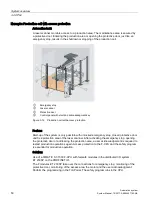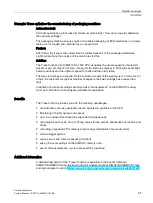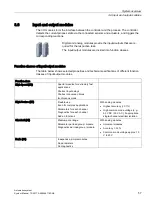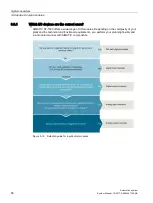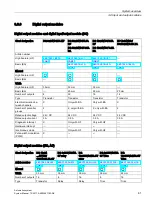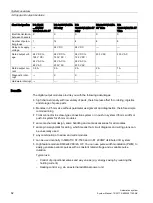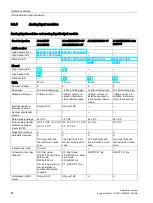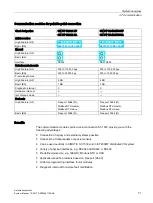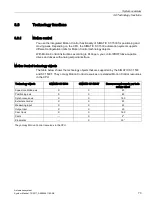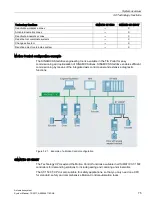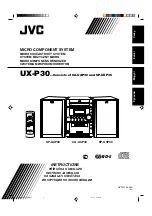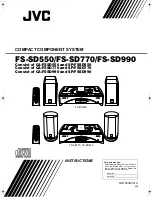
System overview
3.6 Input and output modules
Automation system
62
System Manual, 12/2017, A5E03461182-AE
Short designation DQ 16x24
…48VUC/
125VDC/0.5A ST
DQ 8x230VAC/5A
ST relay
DQ
16x230VAC/2A ST
relay
DQ 8x230VAC/2A
ST Triac
DQ
16x230VAC/1A ST
Triac
Electrical isolation
between channels
X
X
X
X
X
Number of poten-
tial groups
1
16
8
8
8
Relay coil supply
voltage
---
24 V DC
24 V DC
---
---
Rated output volt-
age
24 V DC to
125 V DC /
24 V AC to
48 V AC
24 V DC to
120 V DC /
24 V AC to
230 V AC
24 V DC to
120 V DC /
24 V AC to
230 V AC
230 V AC
230 V AC
Rated output cur-
rent
0.5 A
5 A
2 A
2 A
1 A
Diagnostic inter-
rupt
---
X
X
---
---
Hardware interrupt ---
---
---
---
---
Benefits
The digital output modules provide you with the following advantages:
●
high channel density with low variety of parts, therefore less effort for ordering, logistics
and storage of spare parts
●
Modules in 25 mm size without parameter assignment and diagnostics, therefore simple
commissioning
●
Front connector in screw-type connection system or in push-in system (35 mm width) or
push-in system for 25 mm modules
●
same mechanical design, same handling and same accessories for all modules
●
same pin assignment for wiring, which means that circuit diagrams and wiring plans can
be universally used
●
any combination of narrow and wide modules
●
can be used centrally in SIMATIC S7-1500 and in ET 200MP distributed I/O system
●
High feature module DQ 8x24VDC/2A HF: You can use pulse width modulation (PWM) to
easily generate periodic pulses with a constant rated voltage and a variable pulse
duration.
Typical use:
–
Control of proportional valves and way values (e.g. energy saving by reducing the
holding current).
–
Heating control e.g. via an external additional power unit.
Summary of Contents for Simatic S7-1500/ET 200MP
Page 1: ......



